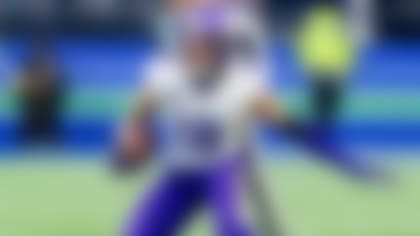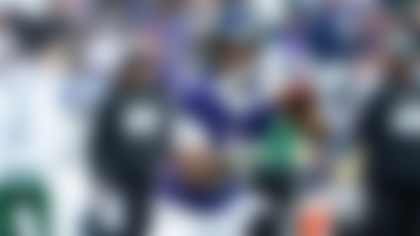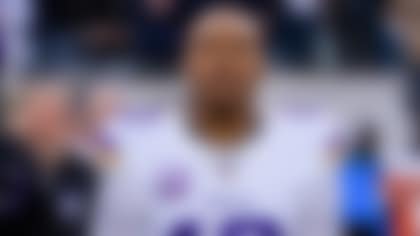With the start of the 2025 NFL regular season within sight, I'm going position by position to unveil my projections for 28 of the most notable offensive rookies this year.
A few notes before we dive in, for context:
- Only two rookie quarterbacks have thrown for more than 3,900 yards since the start of the 2016 season.
- Thirteen rookie running backs have rushed for 1,000-plus yards since the start of the 2016 campaign, and only five have rushed for 10 or more TDs in that span.
- Eleven rookie wide receivers have gained 1,000-plus receiving yards since the start of the 2016 season, and only five have posted 10 or more TDs in that span.
- Only four rookie tight ends have recorded 700-plus receiving yards since the start of the 2016 season, and only five have logged more than five TD catches in that span.
And now, on to the projections.
QUARTERBACK

Drafted: Round 1, No. 1 overall
Best-case scenario: The Titans’ offense surprises by playing to the top-10 potential Ward sees in the group. Dan Moore Jr.'s addition at left tackle and JC Latham's move back to right tackle stabilize the offensive line on the edges, giving the team’s playmakers a chance to shine. Ward has matured when it comes to protecting the football.
Worst-case scenario: Tennessee’s investments in the O-line fail to provide immediate returns, and Ward pays the price. The draft’s top pick flashes but is unable to establish much consistency. Turnovers are an issue all season long.
Projected stats: 3,743 passing yards, 23 TDs, 13 INTs; 287 rushing yards, 3 TDs.

Drafted: Round 1, No. 25 overall
Best-case scenario: Dart proves to Brian Daboll that he gives the Giants the best chance to win and unseats Russell Wilson as the starter relatively early in the season. The offensive line exceeds expectations, while Tyrone Tracy Jr. and Cam Skattebo form a dynamic 1-2 punch in the ground game. Oh, and Malik Nabers continues to light the world on fire. Dart is put in manageable positions and he’s further along as a decision-maker than he showed at Ole Miss.
Worst-case scenario: The Giants’ offense looks a lot like it did in each of the last two seasons, when it ranked 30th and 31st in scoring. In a moment of desperation, the reins are handed to Dart before he’s fully ready for QB1 duty. He’s not up to the challenge behind a leaky O-line.
Projected stats: 2,389 passing yards, 14 TDs, 9 INTs; 253 rushing yards, 2 TDs.

Drafted: Round 2, No. 40 overall
Best-case scenario: Shough wins the starting job early in the season (if not in the final preseason game), showing strong command of the offense and decision-making that continues to improve. No. 9 overall pick Kelvin Banks Jr. performs to his ceiling at left tackle, Chris Olave stays healthy and Alvin Kamara plays at a high level, giving Shough enough of a supporting cast for the team to be competitive in the NFC South.
Worst-case scenario: If a handful of things break the wrong way for the Saints in Year 1 of the Kellen Moore era, it’s not hard to envision this team being the worst in the league. The injury problems that dogged Shough for much of his college career plague him again in the pros. He’s never able to establish a rhythm in his rookie year, spending much of it sitting behind Spencer Rattler.
Projected stats: 2,082 passing yards, 12 TDs, 8 INTs; 136 rushing yards, TD.
RUNNING BACK

Drafted: Round 1, No. 6 overall
Best-case scenario: The rebuild in Vegas proves to be on the accelerated track Pete Carroll has hinted at, with Jeanty serving as the centerpiece of an offense that performs much better than expected. He routinely racks up 100-plus rushing yards, protects the ball well and never veers off course as the Offensive Rookie of the Year front-runner.
Worst-case scenario: Offensive line troubles plague the team, and as good as he is, Jeanty struggles to overcome the scarcity of running lanes. Chunk gains are very hard to come by and the constant struggle to pick up the tough yards takes its toll on the rookie. The Raiders field one of the league’s worst offenses once again.
Projected stats: 293 carries for 1,306 yards, 10 TDs; 36 receptions for 284 yards, 2 TDs.

Drafted: Round 1, No. 22 overall
Best-case scenario: The 6-foot, 220-pound bowling ball wins the starting job and never releases his hold on it, running with a punishing style that delights Jim Harbaugh. Hampton is trusted on third downs and in goal-line situations, too -- aside from being spelled by a backup on occasion, he stays on the field.
Worst-case scenario: Hampton ends up in more of a timeshare, with Harbaugh sitting him for significant stretches. The rookie misses out on valuable scoring opportunities, and the Chargers’ reformed O-line never fully jells after the loss of left tackle Rashawn Slater, taking a big bite out of the offense.
Projected stats: 241 carries for 1,099 yards, 9 TDs; 39 receptions for 331 yards, 2 TDs.

Drafted: Round 2, No. 38 overall
Best-case scenario: Carrying the momentum of a strong camp and preseason into the regular season, Henderson takes off like a rocket. Mike Vrabel makes him the team’s feature back and the rookie never looks back, becoming the team’s most explosive playmaker.
Worst-case scenario: Injury woes that hindered him at times at Ohio State return after he’s asked to carry a significant workload in New England. Some of that explosiveness is sapped and Henderson falls behind Rhamondre Stevenson in the rotation at running back.
Projected stats: 202 carries for 1,025 yards, 7 TDs; 44 catches for 421 yards, 3 TDs.
Drafted: Round 2, No. 60 overall
Best-case scenario: Harvey separates from the rest of the competition in the Broncos’ running back room and becomes Sean Payton’s RB1. He contributes on all three downs after faring better than some expected as a pass protector.
Worst-case scenario: A few rookie mistakes land Harvey in Payton’s doghouse. J.K. Dobbins becomes option 1A in the rotation and never allows the job to slip from his grasp, confining the tough-running newbie to backup duty.
Projected stats: 174 carries for 803 yards, 5 TDs; 39 catches for 301 yards, 2 TDs.
Drafted: Round 3, No. 83 overall
Best-case scenario: Johnson steps in as a more effective version of Najee Harris, proving to be a perfect fit in Pittsburgh’s zone scheme. Mike Tomlin trusts him to pick up tough yards, and he performs better than some expected in the passing game.
Worst-case scenario: Johnson doesn’t show the speed or elusiveness to gain yards in chunks, and his play in pass protection is lacking -- not ideal for a team being led by 41-year-old QB Aaron Rodgers. Tomlin ends up favoring Jaylen Warren in the RB rotation.
Projected stats: 216 carries for 954 yards, 6 TDs; 20 catches for 143 yards, TD.

Drafted: Round 4, No. 104 overall
Best-case scenario: Tuten surpasses Travis Etienne and Tank Bigsby on the depth chart to become Liam Coen’s top option at running back. He’s the home run hitter the franchise has been seeking at the position and provides a Bucky Irving-like impact in Year 1.
Worst-case scenario: The fumbles and drops that plagued him at times in college carry over in his transition to the pros. Coen loses trust in Tuten, who falls far behind Etienne and Bigsby in the competition for snaps.
Projected stats: 114 carries for 542 yards, 3 TDs; 33 catches for 254 yards, 3 TDs.

Drafted: Round 4, No. 105 overall
Best-case scenario: Skattebo bounces back from the hamstring injury that has cost him precious time in training camp and the preseason. He quickly moves above Tyrone Tracy Jr. and Devin Singletary on the depth chart, wearing down defenses with his ability to break through tackles.
Worst-case scenario: He still doesn’t seem to be 100 percent when the season starts and remains stuck in a backup spot. His lack of elite top-end speed keeps him from making the breakaway runs he was known for during his college career.
Projected stats: 158 carries for 675 yards, 4 TDs; 35 catches for 247 yards, 3 TDs.

Drafted: Round 5, No. 149 overall
Best-case scenario: Blue unlocks a level he was never able to reach in a talented Texas backfield, leaving defenders in the dust with his speed and wiggle. He rises above Javonte Williams and Co. in the pecking order to become one of Brian Schottenheimer's favorite weapons.
Worst-case scenario: He’s not up to the challenge of taking on a role larger than the complementary part he played with the Longhorns. The Cowboys’ ground game is crying out for a big-play threat, but Blue has trouble finding running lanes and falls out of favor with Schottenheimer due to some costly mistakes.
Projected stats: 114 carries for 509 yards, 3 TDs; 30 catches for 248 yards, 2 TDs.
Drafted: Round 7, No. 245 overall
Best-case scenario: The trade of Brian Robinson Jr. clears the way for "Bill" to become one of the great stories of the 2025 season. After missing all but one game last season due to eligibility issues, the 13th-to-last pick in this year’s draft becomes the feature back in one of the league’s most dynamic offenses.
Worst-case scenario: The preseason buzz fizzles in a hurry. Croskey-Merritt is firmly planted behind Austin Ekeler and Chris Rodriguez Jr. in the pecking order.
Projected stats: 151 carries for 692 yards, 5 TDs; 16 catches for 139 yards.
WIDE RECEIVER

Drafted: Round 1, No. 2 overall
Best-case scenario: Liam Coen’s offense succeeds beyond anyone’s wildest dreams in Year 1, and Hunter, while electrifying the attack in his own right, is a beneficiary of a career year for Trevor Lawrence. Hunter masters his two-way duties in a hurry and showcases his rare athleticism across the field from Brian Thomas Jr., giving the Jaguars one of the league’s best WR duos.
Worst-case scenario: Hunter runs out of gas trying to pull double duty and doesn’t offer the explosiveness Jacksonville expected him to provide on offense. Physical coverage wears him down and it becomes clear early in the season that Coen’s offense is out of sync.
Projected stats: 82 catches for 1,097 yards, 8 TDs.

Drafted: Round 1, No. 8 overall
Best-case scenario: Bryce Young proves that his strong finish to last season was no fluke, taking another step in his development with McMillan becoming his No. 1 target. The rookie’s combination of size, length and ball skills makes him a true weapon, including in the red zone.
Worst-case scenario: Young regresses and the Panthers’ offense is a mess for much of the season. McMillan’s burst and physicality are not where they need to be, making him an unexciting possession receiver who only flashes on occasion.
Projected stats: 72 catches for 901 yards, 6 TDs.
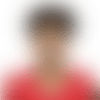
Drafted: Round 1, No. 19 overall
Best-case scenario: The Egbuka hype train that gathered steam in camp is fully justified. Baker Mayfield shows complete trust in the former Buckeye, who delivers whether he’s asked to fill in for Chris Godwin or play alongside him whenever Godwin returns from injury.
Worst-case scenario: Tampa Bay's offense is out of sorts to start the campaign after an injury-plagued camp/preseason. Egbuka gets his share of targets early on, but his game is short on big plays. Eventually, Godwin and Jalen McMillan return from injuries and eat into the first-round pick's workload. There are games where Egbuka doesn’t see the ball much.
Projected stats: 73 catches for 932 yards, 6 TDs.
Drafted: Round 1, No. 23 overall
Best-case scenario: Golden instantly provides the WR1 bona fides Green Bay’s offense has been missing. He’s a big-play machine, hitting it off with Jordan Love and becoming the Packers’ first 1,000-yard receiver since Davante Adams’ last year with the team (2021).
Worst-case scenario: Big, physical defenders have success neutralizing Golden, who doesn’t have elite size. Focus drops become a bigger issue than expected, and his involvement trends downward among a crowded group of pass catchers, especially when Christian Watson returns from injury.
Projected stats: 67 catches for 943 yards, 6 TDs.

Drafted: Round 2, No. 34 overall
Best-case scenario: The Nico Collins comparisons are spot on! Most defensive backs are no match for Higgins’ size, athleticism and ball skills. His rapport with C.J. Stroud is strong, pushing the Texans’ passing game to the next level.
Worst-case scenario: Houston’s new-look offensive line doesn’t jell as hoped, setting back the entire offense. Higgins loses a surprising rate of 50/50 balls and doesn’t have the yards-after-catch ability to establish himself as a playmaker.
Projected stats: 60 catches for 798 yards, 5 TDs.

Drafted: Round 2, No. 39 overall
Best-case scenario: Burden proves the rest of the league made a mistake by letting him fall to the Bears in Round 2 of this year’s draft. He looks like a potential WR1 of the future and is one of Caleb Williams’ favorite targets, even with a talented collection of pass catchers for the young QB to keep happy.
Worst-case scenario: Ben Johnson prefers Olamide Zaccheaus as his No. 3 wide receiver, burying Burden on the depth chart while he sorts through some rookie growing pains. It’s a bumpy start to the Johnson era, with Williams and Burden never seeming to be on the same page.
Projected stats: 49 catches for 625 yards, 4 TDs.
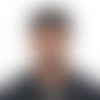
Drafted: Round 2, No. 55 overall
Best-case scenario: Harris emerges as the top complement to Ladd McConkey in the passing game, giving the Chargers a good-sized target who can win deep. He alleviates concerns about the team’s depth at the position, admirably filling the role Mike Williams was expected to play before his retirement.
Worst-case scenario: He can’t shake the injury woes that hindered him in college, falling back in the competition for reps. A lack of explosiveness stands out, and Justin Herbert has to lean on his other options while Harris tries to get back to top form.
Projected stats: 47 catches for 596 yards, 3 TDs.
Drafted: Round 2, No. 58 overall
Best-case scenario: Bech and the Las Vegas offense exceed expectations, with the rookie’s competitiveness jumping off the screen and eventually earning him a starting spot. His size and strength lead to a high number of contested catches, endearing him to QB Geno Smith.
Worst-case scenario: He’s no match for NFL press coverage, and a lack of burst puts him at a clear disadvantage in his matchups. Bech rises no higher than fourth on the depth chart, and the Raiders’ passing game does not have the juice needed to compete in the AFC West.
Projected stats: 37 catches for 447 yards, 2 TDs.

Drafted: Round 3, No. 69 overall
Best-case scenario: A relatively quiet camp/preseason turns out to be the calm before the storm Williams unleashes on New England’s opponents. Drake Maye finally has the deep target he needed. Williams leaves defenders in the dust when he hits the gas and climbs the ranks in a flash on a rising Patriots offense.
Worst-case scenario: Williams’ quiet start continues into the regular season and he never really heats up. Drops are a problem, which tests Mike Vrabel’s patience, and the team’s offensive line woes don’t allow for a lot of downfield plays to develop. It becomes clear that the rookie needs to add play strength to give himself a better chance.
Projected stats: 39 catches 498 yards, 2 TDs.

Drafted: Round 3, No. 70 overall
Best-case scenario: The fit in Detroit almost seems too good to be true. TeSlaa makes progress faster than anyone expected, especially as a route runner, and eventually overtakes Tim Patrick as the No. 3 receiver in one of the league’s best offenses.
Worst-case scenario: While the third-round pick's preseason generated a lot of excitement, he doesn’t seem like the same guy when faced with the steeper competition of the regular season. He’ll need more time to develop before he’s ready for a significant role.
Projected stats: 48 catches for 588 yards, 4 TDs.

Drafted: Round 4, No. 108 overall
Best-case scenario: The Raiders fill their glaring need for deep speed, with Thornton looking like a potential draft steal, oozing star potential. Having blazed a 4.30 40-yard dash at the NFL Scouting Combine, the 6-foot-5 wideout offers a unique combination of skills that make him an immediate downfield threat.
Worst-case scenario: After the speed merchant hits a few home runs on deep balls, defenses wise up and shift coverage to Thornton’s side of the field. With no other fully developed clubs in his bag, the rookie's impact wanes, as he’s not as big of a threat after the catch on shorter throws.
Projected stats: 49 catches for 672 yards, 3 TDs.

Drafted: Round 5, No. 166 overall
Best-case scenario: The camp standout becomes a regular-season sensation. Horton earns plenty of snaps as the No. 3 receiver behind Jaxon Smith-Njigba and Cooper Kupp, making it clear teams whiffed by sleeping on him in the draft after his injury-abbreviated senior season. His instincts and quickness elevate Seattle’s offense.
Worst-case scenario: He doesn’t have the length or size to win contested catches at a high enough clip and he can’t avoid the injury bug. Marquez Valdes-Scantling and Jake Bobo outperform him, with his role diminishing as the season wears on.
Projected stats: 54 catches for 699 yards, 4 TDs.
TIGHT END

Drafted: Round 1, No. 10 overall
Best-case scenario: We see shades of Travis Kelce. Loveland is a constant mismatch, and defensive coordinators can’t figure out how to stop him. The former Wolverine feasts under Ben Johnson, who coached Sam LaPorta to a Pro Bowl season as a rookie.
Worst-case scenario: The Bears’ offense never truly gets cooking with Caleb Williams still adjusting to a new system. Physical defenders are able to bully Loveland at the line of scrimmage a bit, and it becomes obvious he’ll need more play strength if he’s going to live up to his billing.
Projected stats: 61 catches for 713 yards, 5 TDs.

Drafted: Round 1, No. 14 overall
Best-case scenario: The Colts find one of the elements they have sorely needed on offense -- a playmaking tight end. With a rare combination of size, toughness and versatility, Warren dominates at times. He has a strong connection with Daniel Jones, who fully embraces his new safety valve.
Worst-case scenario: There’s no end in sight to Indianapolis’ long search for stability at quarterback, and Warren’s opportunities suffer as a result. He looks closer to solid than spectacular in Year 1.
Projected stats: 61 catches for 679 yards, 4 TDs.
Drafted: Round 2, No. 42 overall
Best-case scenario: The Jets never have to worry about who will be the No. 2 target behind Garrett Wilson because Taylor steps up and handles the duties with relative ease. Justin Fields has the best season of his career in Tanner Engstrand’s offense, and Taylor’s reliability plays a big role in his ascent.
Worst-case scenario: Taylor gets the job done most of the time, but his lack of elite speed limits his ability to pick up yards in chunks. Fields doesn’t blossom as he learns yet another new offense, and the Jets are stuck in neutral.
Projected stats: 50 catches for 516 yards, 4 TDs.
Drafted: Round 2, No. 50 overall
Best-case scenario: Arroyo provides a jolt of energy to the passing game. His size and speed make him a matchup nightmare for defenses, and he matures quickly as a route runner. Sam Darnold looks the rookie’s way early and often.
Worst-case scenario: The version of Darnold we witnessed in his final two games of last season isn’t an aberration. While Arroyo has promising moments, it looks like his game will need significant polishing before it’s ready for prime time.
Projected stats: 43 catches for 459 yards, 3 TDs.






























